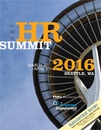At PSMJ's and The Employee Engagement Group’s 2015 HR Summit, more than 75 human resources professionals came together to debate the concept of employee satisfaction vs. employee engagement.
 The lively exchange prompted questions on whether this was “just a people” issue or does it really affect firms’ profitability? To help understand this debate, it is helpful to understand the definitions of both terms.
The lively exchange prompted questions on whether this was “just a people” issue or does it really affect firms’ profitability? To help understand this debate, it is helpful to understand the definitions of both terms.
A basic definition of employee satisfaction comes from Susan M. Heathfield, of About.com:
Employee satisfaction is the terminology used to describe whether employees are happy and contented and fulfilling their desires and needs at work. Factors contributing to employee satisfaction include treating employees with respect, providing regular employee recognition, empowering employees, offering above industry-average benefits and compensation, providing employee perks and company activities, and positive management within a success framework of goals, measurements, and expectations.
A good definition of employee engagement is from Wayne Cascio’s book, Investing in People:
Engagement is a positive, fulfilling, work-related state of mind that is characterized by vigor, dedication, and absorption. Vigor refers to high levels of energy and mental resilience while working, the willingness to invest effort in one’s work, and persistence even in the face of difficulties. Dedication is characterized by a sense of significance, enthusiasm, inspiration, pride, and challenge at work. Absorption consists of being fully concentrated, happy, and deeply engrossed on one’s work whereby time passes quickly, and one has difficulty detaching oneself from work.
While employee satisfaction is a positive goal to strive for within an organization, it can also foster contentment, which can then breed mediocrity, providing an opportunity for employees to perform at minimum effort to “get by.” Basically, employee satisfaction is a one-way street…what is the employer giving the employee to keep them satisfied.
Several years ago an employee of mine seemed excited, at first, to leave his adjunct teaching job to work in our office as a full-time administrator. However, after a few months, I noticed that he started walking slowly and day-dreaming. I asked him if he missed being in front of the students. He acknowledged that he did, but that his wife wanted him to take an office job that was more secure and had better benefits. I encouraged him to follow his heart and to do what he was passionate about. The next day, he gave his two-week notice saying that, when he talked with his wife about the situation, she acknowledged that he was not happy anymore and wanted him to find the joy he had as a teacher.
I tell that story to reinforce that fact that it is up to you, a leader in your firm, to surround yourself with engaged employees, not just satisfied employees. When you do, you will see the profits rise, team spirits rise, and your vision of a successful, meaningful business come true.
How do you get started changing the culture to be one of engagement, not just satisfaction? Take Bob Kelleher’s advice in his book, “Louder Than Words, Ten Employee Engagement Steps that Drive Results,” and then follow the steps:
1. Link to high performance
2. Start at the top
3. Engage first-line leaders
4. Communicate
5. Individualize your engagement
6. Create a motivational culture
7. Create feedback mechanisms
8. Reinforce and reward
9. Track progress and success
10. Hire and promote engaged employees
In today’s fast-changing and competitive landscape for architecture and engineering firms, the role of the HR professional is becoming more strategic and more critical than ever before. You need the latest thinking on finding the best talent, a solid grasp on emerging trends in ongoing learning, the most innovative and effective approaches to performance management, and much more.

Focused specifically on the A/E/C space, PSMJ and The Employee Engagement Group are hosting our 7th Annual HR Summit, on March 31-April 1, 2016 in Seattle. This is the place to learn, network, and engage with hundreds of A/E/C HR professionals and firm leaders just like you.



